以下摘自 Daniel Wood 的博客:
http://blogold.chinaunix.net/u4/123238/article_150426.html
Android GPS 架构分析(gps 启动过程图)
�
�
Gps 启动过程图(基于 Google Android 2.2 代码)
下面再贴一张从 GoogleI/O 大会文档里面截来的图
Android GPS 架构分析-preview
Android GPS 架构分析
Daniel Wood 20101222
转载时请注明出处和作者
文章出处:http://danielwood.cublog.cn
作者:Daniel Wood
----------------------------------------------------------
看 Android 的 GPS 模块有两个月了吧,终于可以写点东西出来。首先来看看 GPS
模块的代码结构:
Framework:
1.frameworks/base/location/java/android/location
这里主要是用来被 App 调用的,API 包是 android.location。
2.frameworks/base/location/java/com/android/internal/location
这个目录是 Framework 对 Location 服务的内部实现。
3.framework\services\java\com\android\server
这个目录只有一个文件
|-- LocationManagerService.java
�
是 Location 服务对内部实现的一种封装。
JNI:
frameworks/base/core/jni/android_location_GpsLocationProvider.cpp
JNI 层只有一个文件,起到承上启下的作用。上层承接 Framework,下层调用 HAL
层具体硬件抽象实现。
HAL:Hardware Abstract Layer 硬件抽象层
hardware\libhardware_legacy\gps
hardware\libhardware_legacy\include\hardware_legacy\gps.h
HAL 层相当于一个 linux 应用程序接口,通过 open,close 等操作,操作硬件设
备。Android 的源代码只实现了模拟器的 gps 接口,具体在文件 gps_qemu.c 中。
在 2.2 版本中提供了对 QCOM 公司的 gps 的实现,在以下目录:
\hardware\qcom
下面介绍几个重要的数据结构:
1. GpsInterface 接口是 gps 模块中最重要的数据结构,它是底层驱动实现的接
口,如果要 porting 到自己的板子上,就需要实现这些接口。该接口的定义在
gps.h 中,模拟器实现在 gps_qemu.c 中。
/** Represents the standard GPS interface. */
typedef struct {
/**
* Opens the interface and provides the callback routines
* to the implemenation of this interface.
*/
int (*init)( GpsCallbacks* callbacks );
/** Starts navigating. */
int (*start)( void );
/** Stops navigating. */
int (*stop)( void );
/** Closes the interface. */
void (*cleanup)( void );
/** Injects the current time. */
int (*inject_time)(GpsUtcTime time, int64_t timeReference,
�
uncertainty);
int
/** Injects current location from another location provider
* (typically cell ID).
* latitude and longitude are measured in degrees
* expected accuracy is measured in meters
*/
int (*inject_location)(double latitude, double longitude,
float accuracy);
/**
* Specifies that the next call to start will not use the
* information defined in the flags. GPS_DELETE_ALL is
passed for
* a cold start.
*/
void (*delete_aiding_data)(GpsAidingData flags);
/**
* fix_frequency represents the time between fixes in
seconds.
* Set fix_frequency to zero for a single-shot fix.
*/
int (*set_position_mode)(GpsPositionMode mode, int
fix_frequency);
/** Get a pointer to extension information. */
const void* (*get_extension)(const char* name);
} GpsInterface;
2. GpsCallbacks 回调函数
这个是回调函数结构体,定义也在 gps.h 中。它们的实现是在
�
android_location_GpsLocationProvider.cpp 中,google 已经实现了,我们
不需要做任何动作。
/** GPS callback structure. */
typedef struct {
gps_location_callback location_cb;
gps_status_callback status_cb;
gps_sv_status_callback sv_status_cb;
gps_nmea_callback nmea_cb;
} GpsCallbacks;
/** Callback with location information. */
typedef void (* gps_location_callback)(GpsLocation* location);
/** Callback with status information. */
typedef void (* gps_status_callback)(GpsStatus* status);
/** Callback with SV status information. */
typedef void (* gps_sv_status_callback)(GpsSvStatus* sv_info);
/** Callback for reporting NMEA sentences. */
typedef void (* gps_nmea_callback)(GpsUtcTime timestamp, const
char* nmea, int length);
3. GpsLocation
表示 Locatin 数据信息,底层驱动获得 Location 的 raw 信息,通常是 nmea
码,然后通过解析就得到了 location 信息。
/** Represents a location. */
typedef struct {
/** Contains GpsLocationFlags bits. */
uint16_t flags;
/** Represents latitude in degrees. */
double latitude;
/** Represents longitude in degrees. */
�
double longitude;
/** Represents altitude in meters above the WGS 84 reference
* ellipsoid. */
double altitude;
/** Represents speed in meters per second. */
float speed;
/** Represents heading in degrees. */
float bearing;
/** Represents expected accuracy in meters. */
float accuracy;
/** Timestamp for the location fix. */
GpsUtcTime timestamp;
} GpsLocation;
Android GPS 架构分析(一)
Android GPS 架构分析
Daniel Wood 20101222
转载时请注明出处和作者
文章出处:http://danielwood.cublog.cn
作者:Daniel Wood
--------------------------------------------------------------------
介绍完了主体代码结构以及重要的数据结构后,下面来看看 gps 的定位服
务(LocationManager)的启动过程。我总是喜欢追本溯源地从源头去认识事物。
因为“人之初,性本善”,从事物的本性去认识事物。
LocationManager 这项服务是在 SystemServer.java 中启动的,也就是系统启
动之后,这个服务就已经启动了:
systemServer.java [framework\base\services\java\com\android\server]
在 SystemServer.java 的 init2 函数中启动了一个线程来注册 Android 的诸
多服务,如:Bluetooth Service,NetworkManagement Service,Notification
Manager 等,当然也包括 Location Service。
SystemServer.java [frameworks\base\services\java\com\android\server]
�
public static final void init2() {
Slog.i(TAG, "Entered the Android system server!");
Thread thr = new ServerThread();
thr.setName("android.server.ServerThread");
thr.start();
}
在 ServerThread 线程的 run 函数中 LocationManager 服务的代码段如下:
2.1 版本
try {
Log.i(TAG, "Location Manager");
ServiceManager.addService(Context.L
OCATION_SERVICE, new LocationManagerService(context));
} catch (Throwable e) {
Log.e(TAG, "Failure starting Location
Manager", e);
}
2.2 的代码中代码段如下形式:
try {
LocationManagerService(context);
OCATION_SERVICE, location);
Slog.i(TAG, "Location Manager");
location = new
ServiceManager.addService(Context.L
} catch (Throwable e) {
Slog.e(TAG, "Failure starting
Location Manager
在 run 函数的后半部分,是服务对系统的反馈,就是 systemReady()函数。
LocationManager 服务的反馈函数如下:
�

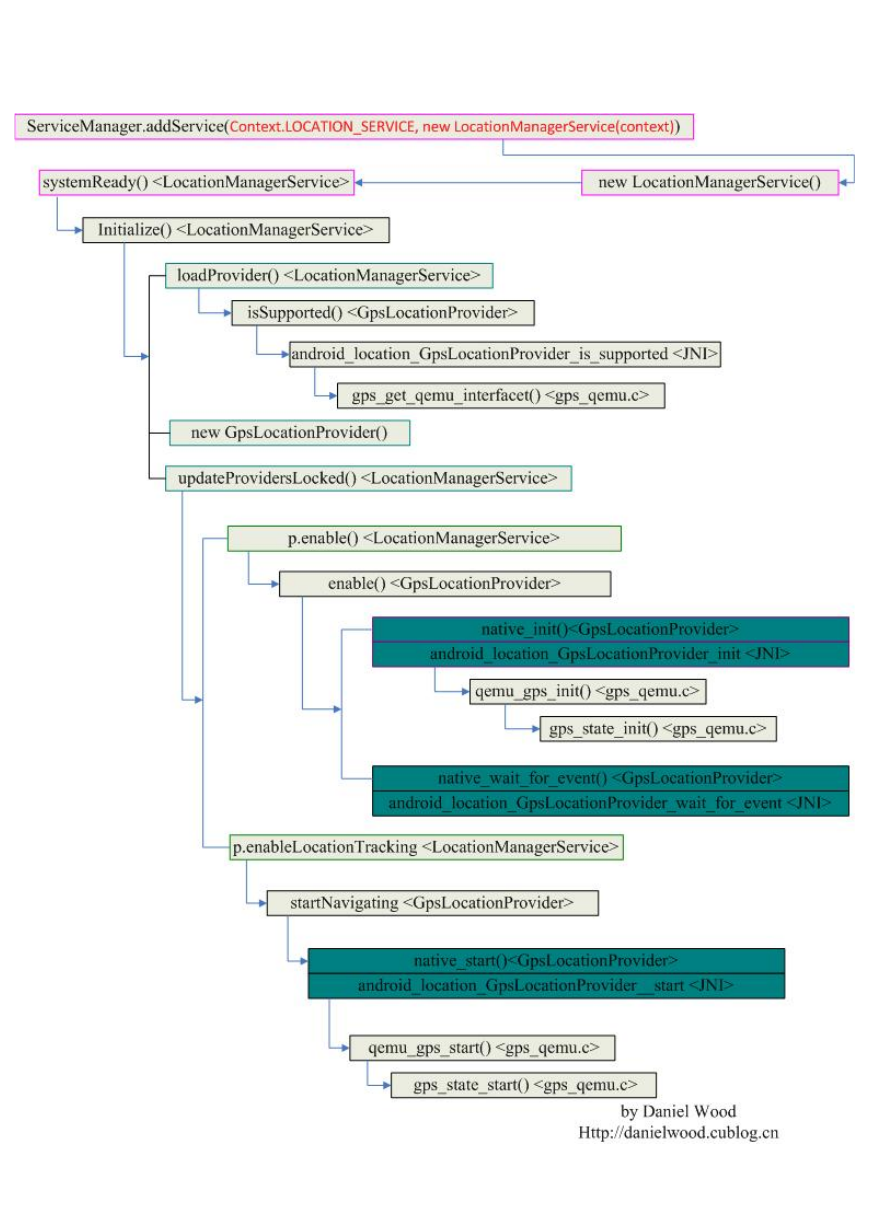


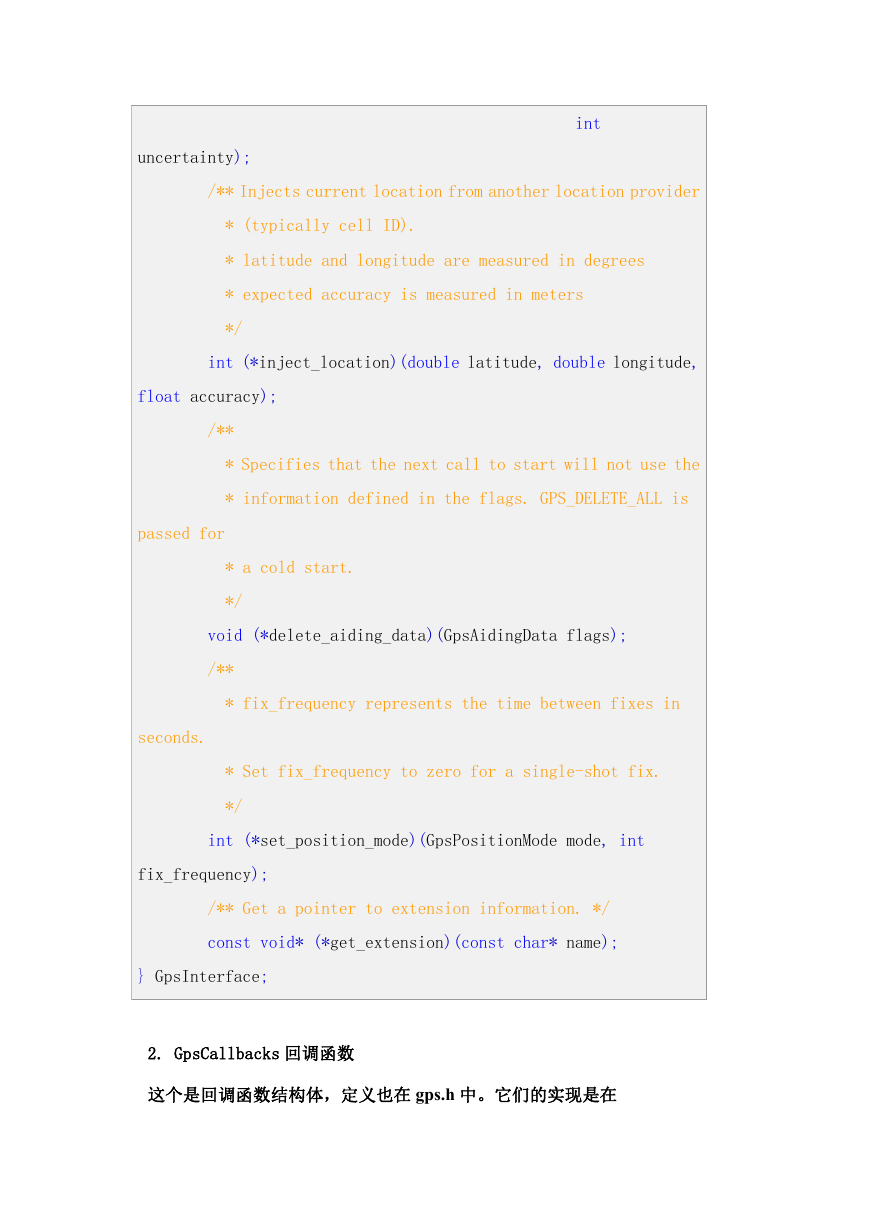
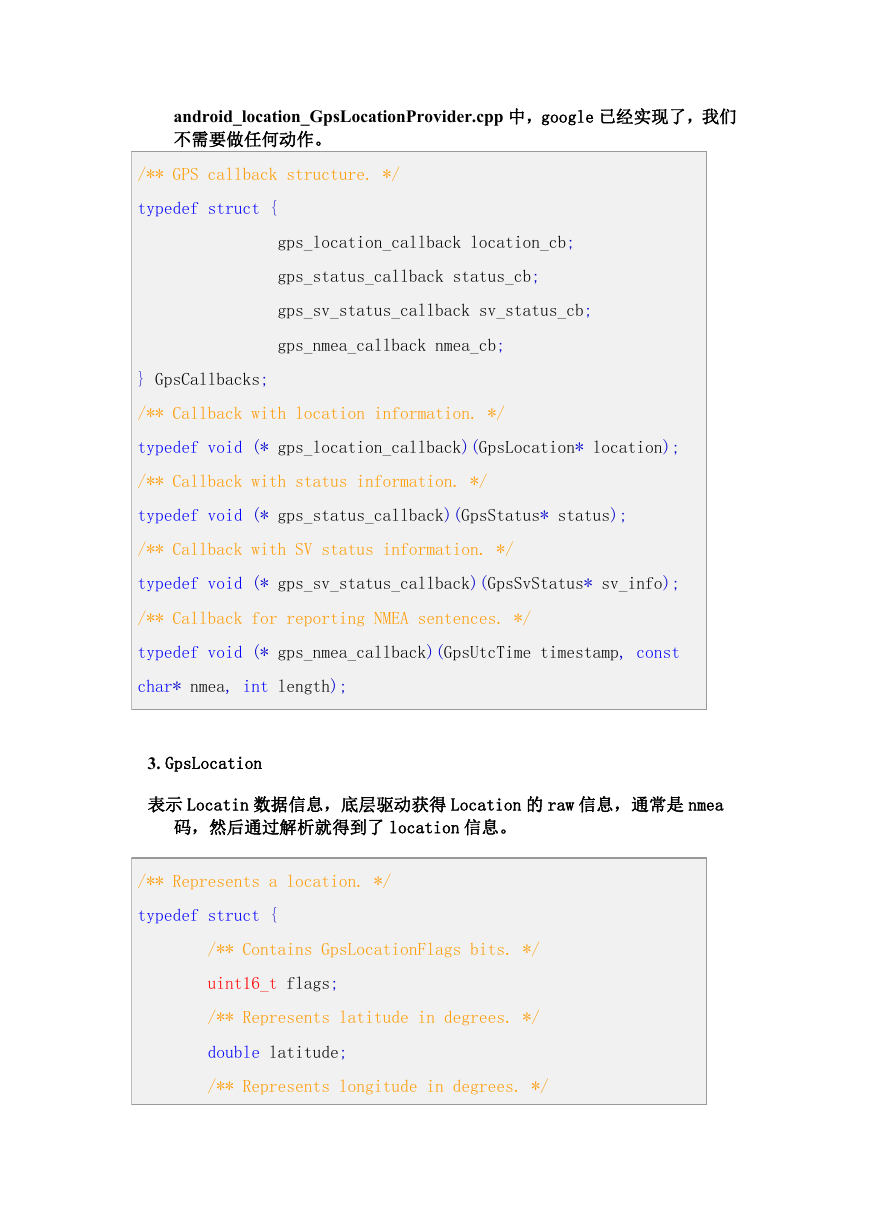
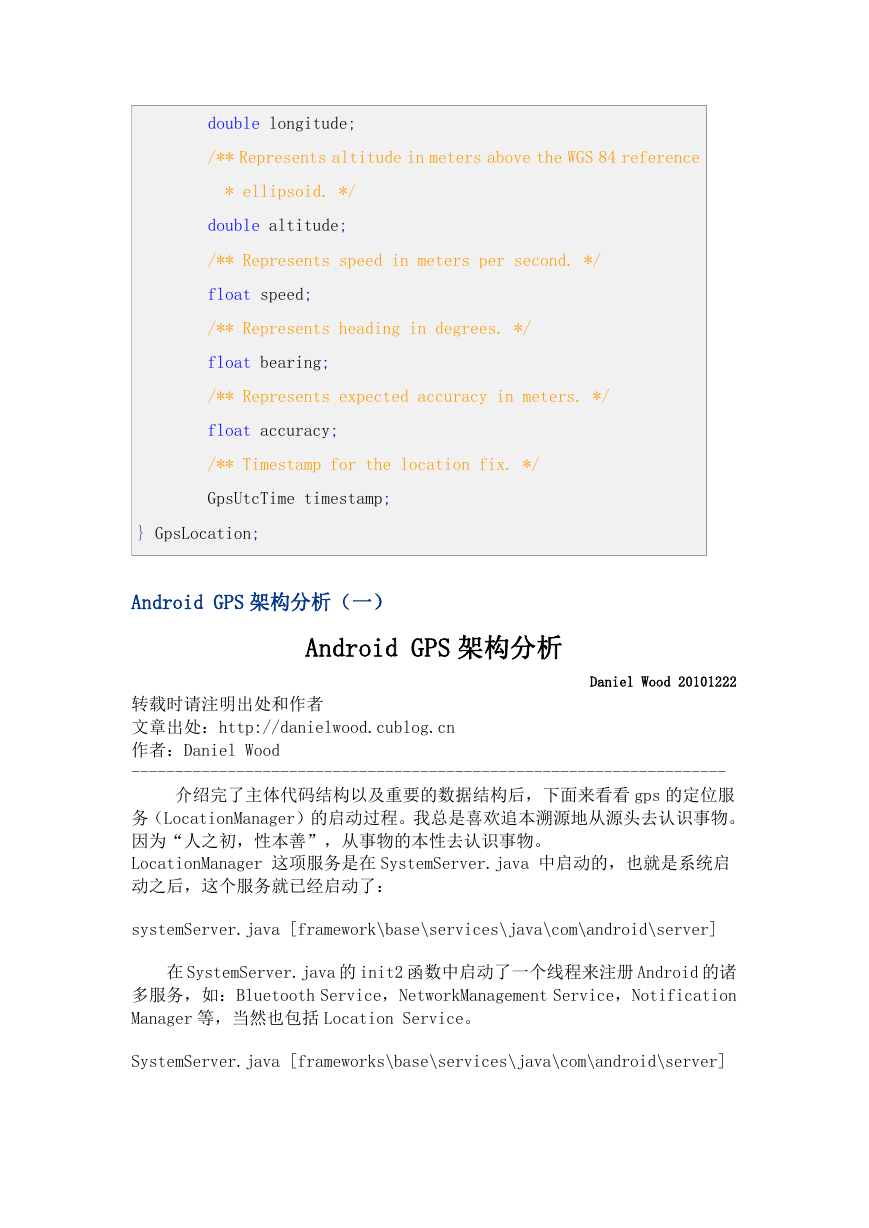
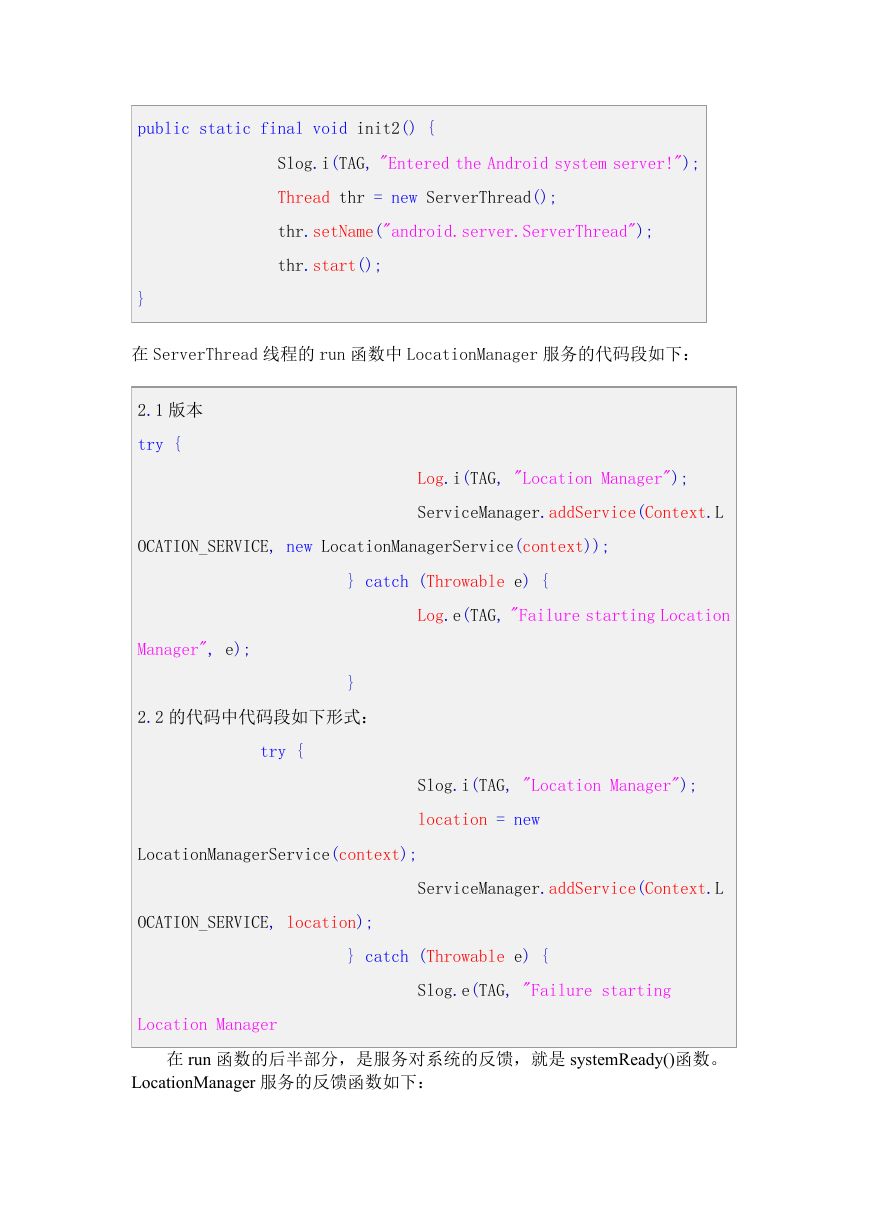








 2023年江西萍乡中考道德与法治真题及答案.doc
2023年江西萍乡中考道德与法治真题及答案.doc 2012年重庆南川中考生物真题及答案.doc
2012年重庆南川中考生物真题及答案.doc 2013年江西师范大学地理学综合及文艺理论基础考研真题.doc
2013年江西师范大学地理学综合及文艺理论基础考研真题.doc 2020年四川甘孜小升初语文真题及答案I卷.doc
2020年四川甘孜小升初语文真题及答案I卷.doc 2020年注册岩土工程师专业基础考试真题及答案.doc
2020年注册岩土工程师专业基础考试真题及答案.doc 2023-2024学年福建省厦门市九年级上学期数学月考试题及答案.doc
2023-2024学年福建省厦门市九年级上学期数学月考试题及答案.doc 2021-2022学年辽宁省沈阳市大东区九年级上学期语文期末试题及答案.doc
2021-2022学年辽宁省沈阳市大东区九年级上学期语文期末试题及答案.doc 2022-2023学年北京东城区初三第一学期物理期末试卷及答案.doc
2022-2023学年北京东城区初三第一学期物理期末试卷及答案.doc 2018上半年江西教师资格初中地理学科知识与教学能力真题及答案.doc
2018上半年江西教师资格初中地理学科知识与教学能力真题及答案.doc 2012年河北国家公务员申论考试真题及答案-省级.doc
2012年河北国家公务员申论考试真题及答案-省级.doc 2020-2021学年江苏省扬州市江都区邵樊片九年级上学期数学第一次质量检测试题及答案.doc
2020-2021学年江苏省扬州市江都区邵樊片九年级上学期数学第一次质量检测试题及答案.doc 2022下半年黑龙江教师资格证中学综合素质真题及答案.doc
2022下半年黑龙江教师资格证中学综合素质真题及答案.doc